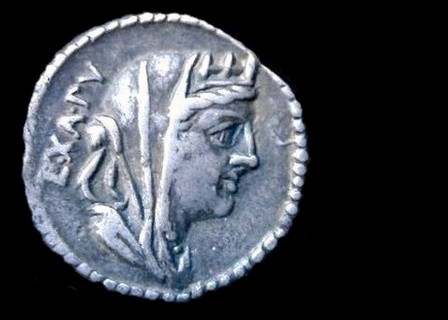 |
 |
The cult of Cybele, a mother-goddess originated in Phrygia and arrived in Italy during 205 BC after Roman ambassadors had returned from Pergamum and had brought back a sacred object (a black meteoritic stone believed to be the throne of Cybele) necessary, according to the Sibylline prophecy, to avert the danger of a Carthaginian onslaught under Hannibal. Cybele, or Magna Mater as she became known to the Romans, had a temple on the Palatine hill where her festival, the Megalensia, was celebrated each April. Cybele appears frequently on Imperial coins of the second and third century AD. Obverse images usually depict the head of Magna Mater wearing a turreted headdress. Reverse coin types variously show her enthroned between lions; or driving a biga drawn by lions; or riding a lion; standing, holding a branch or sceptre, sometimes a phiale or tympanum (ceremonial drum); or facing and leaning against a column. On the denarius below, the bust of Cybele is shown veiled, wearing her turreted headdress. |